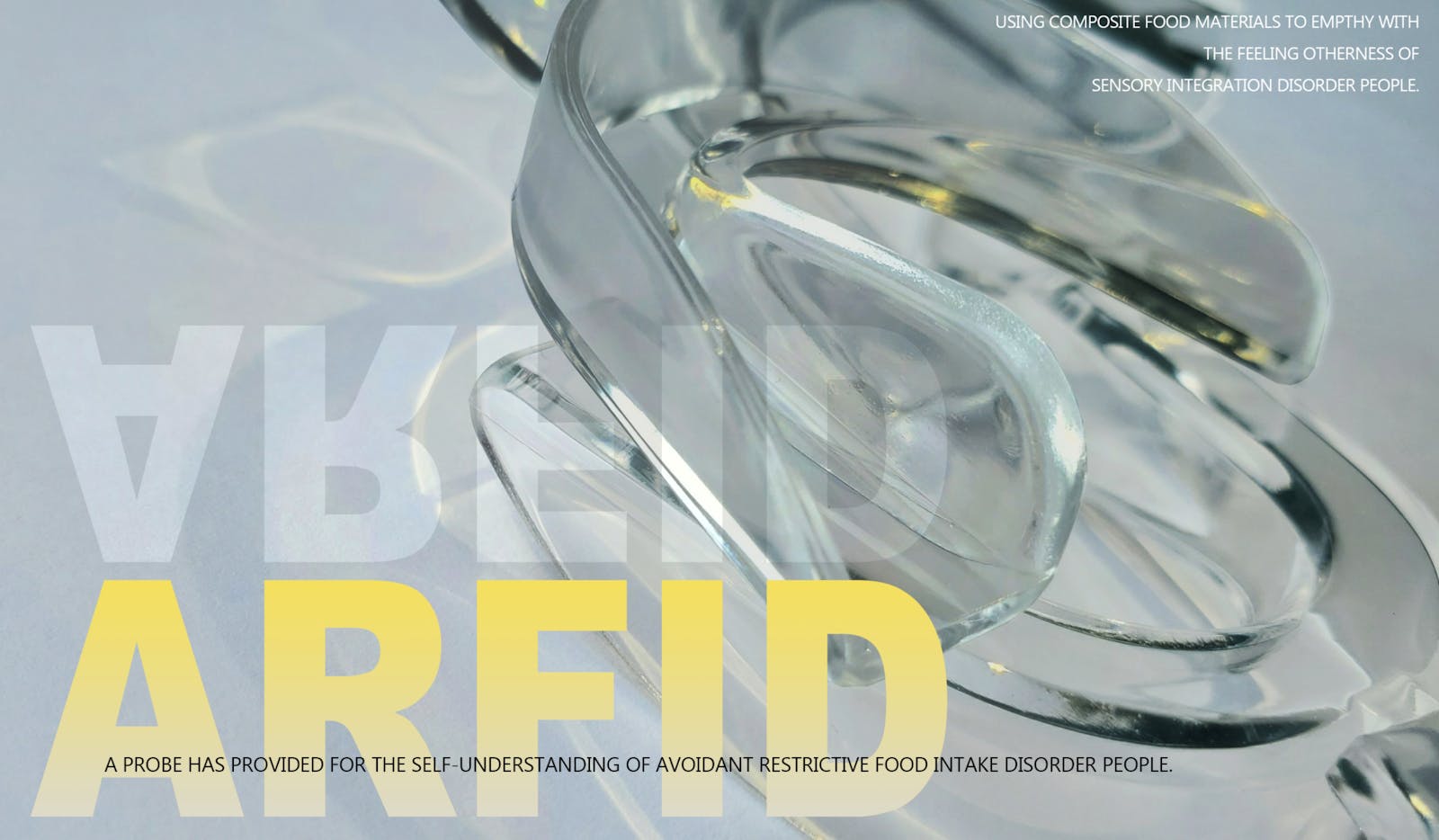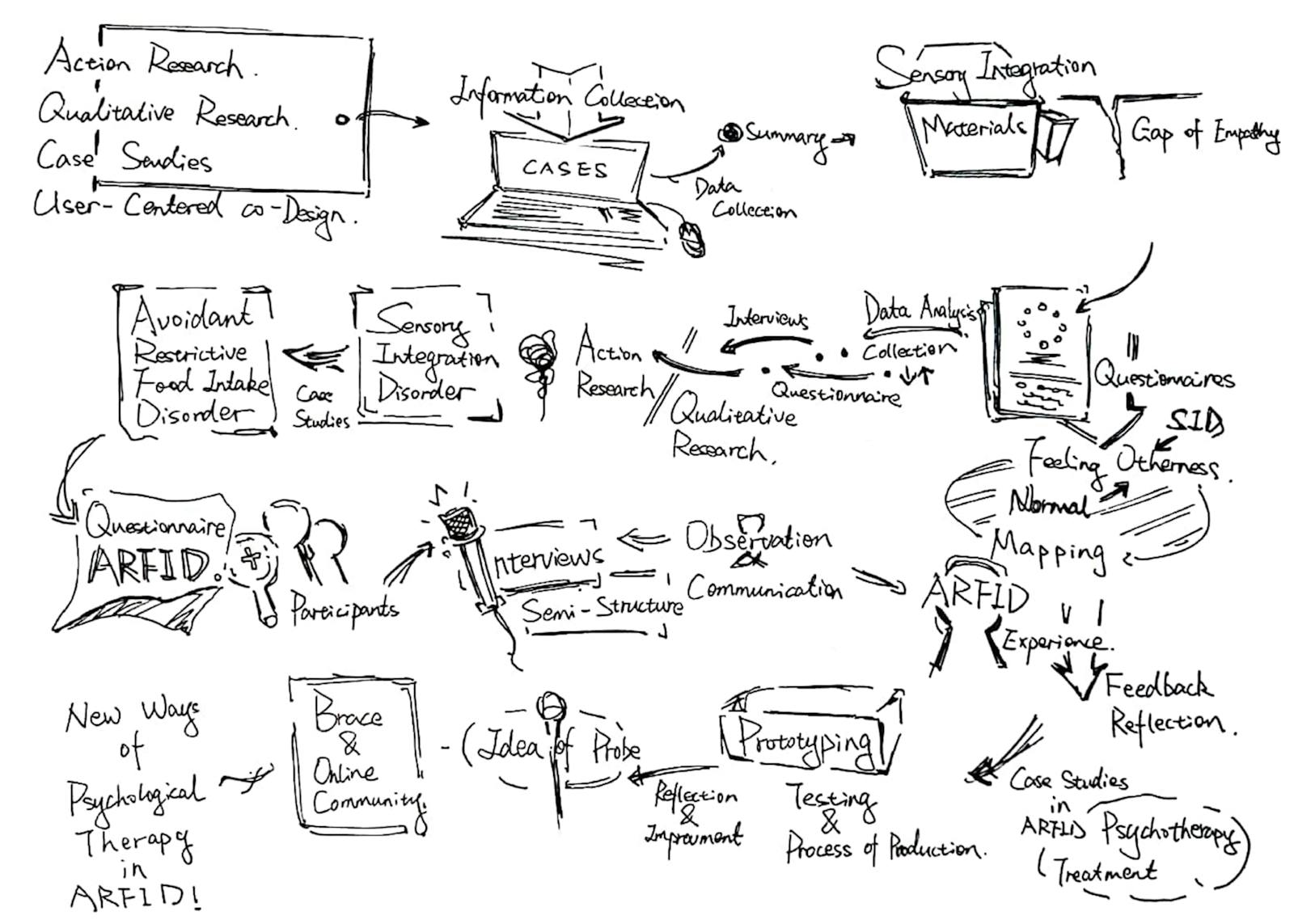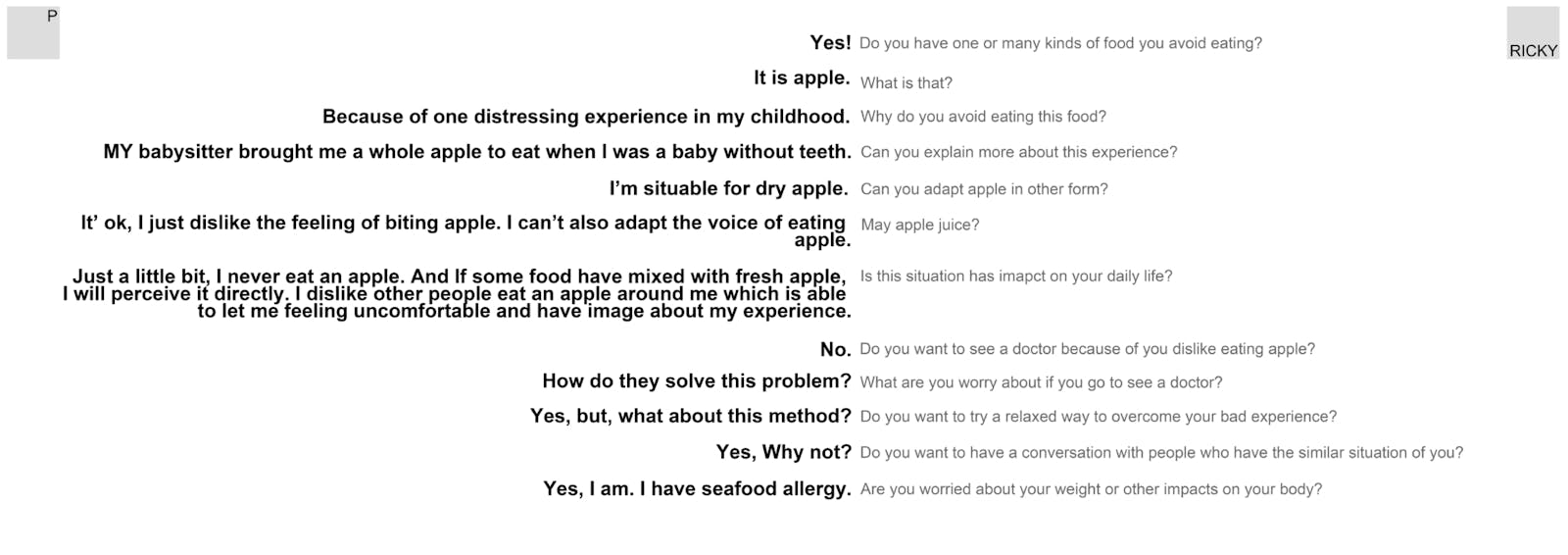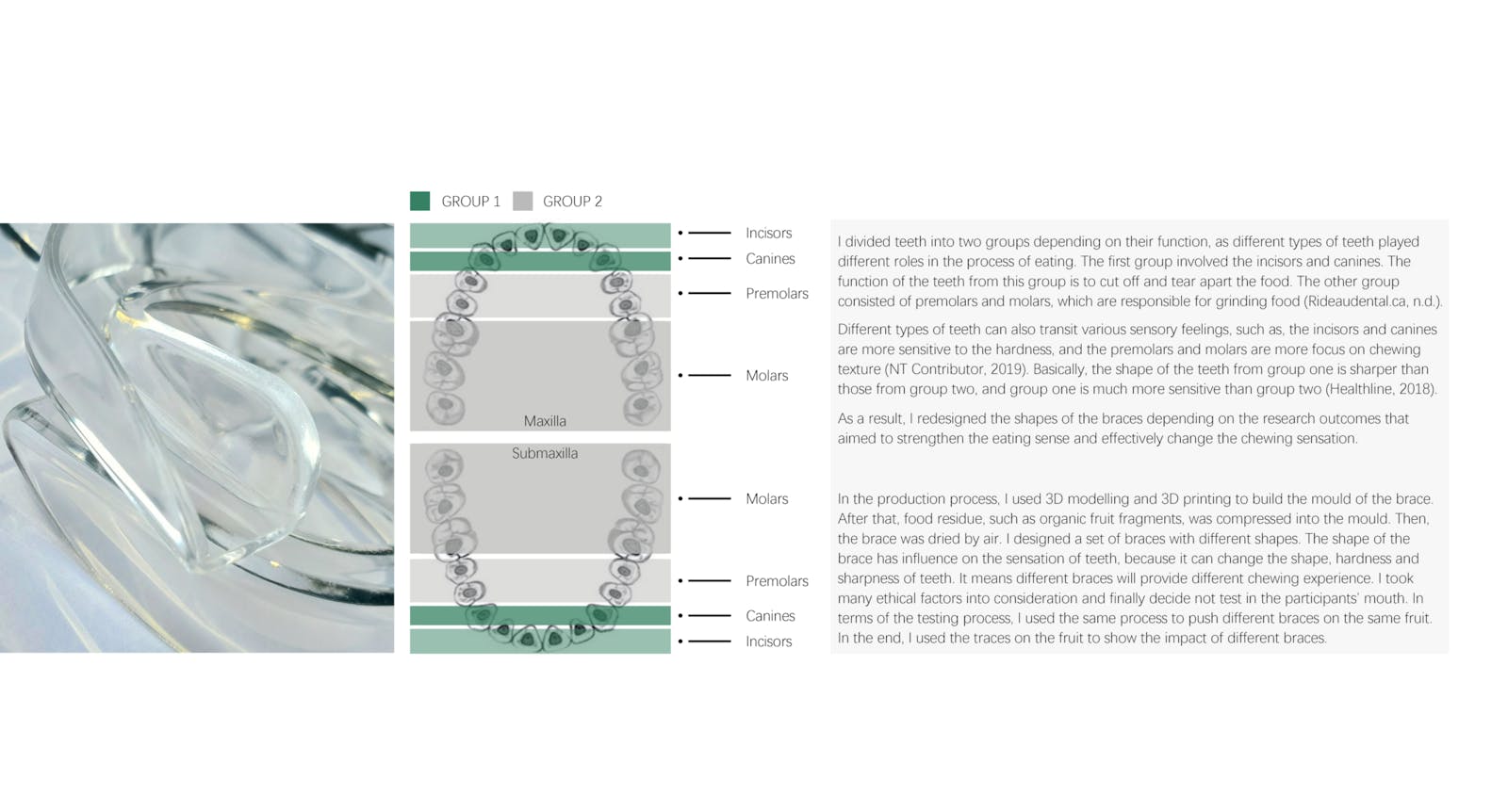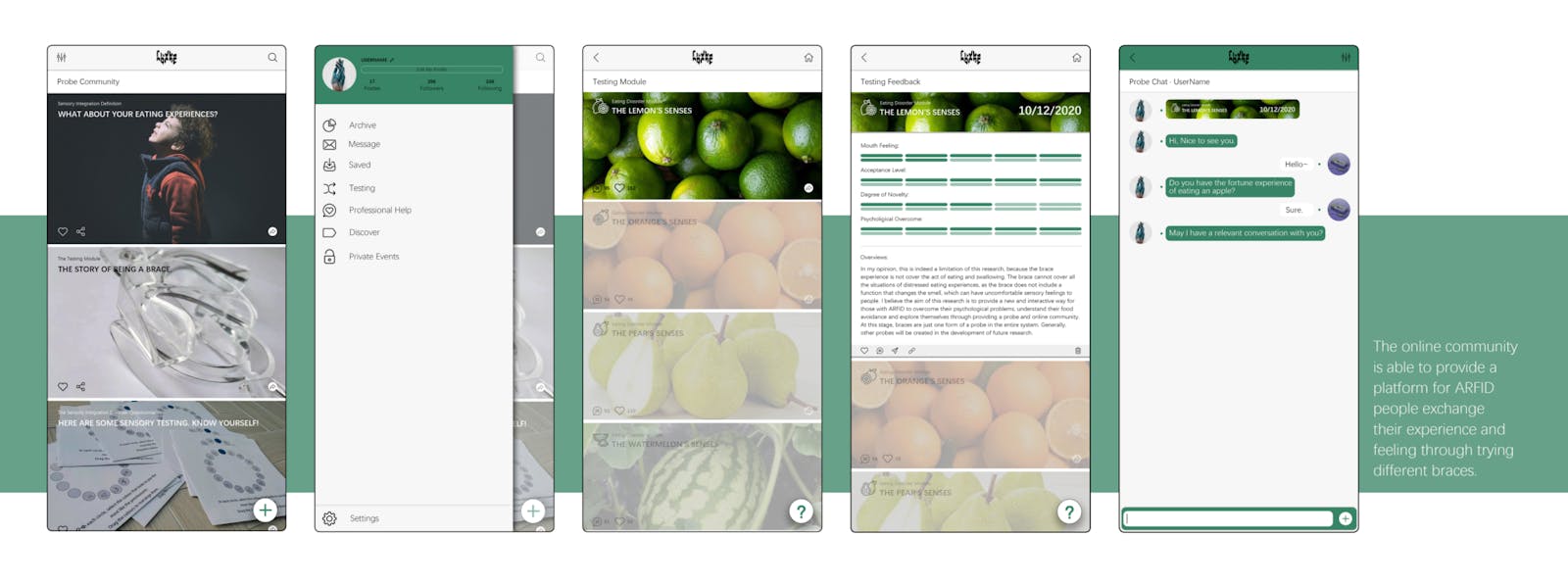Tianmiao Li
PRACTICAL RESEARCH FOR THE WAY OF ARFID OTHERNESS EMPATHIZING.
Summary
This practical research focuses on exploring the relationship between the materials and the senses of sensory integration disorder (SID). The research aims to affect the eating habits of those with avoidant restrictive food intake disorder (ARFID) and create a new method for the psychological cognitive treatment of ARFID. Using composite food materials to empthy with the feeling otherness of sensory integration disorder people. A probe has provided for the self-understanding of avoidant restrictive food intake disorder people.
Additional info
My research methodology is a combination of action research, qualitative research, case studies and user-centred co-design. At the beginning of the research project, I collected information about relevant cases through online platforms. I then summarised the cases of the target group in the form of data collection and data analysis, and then extracted relevant information about sensory integration and materials through the secondary data analysis. I used questionnaires to help me gain a preliminary understanding of the target population. The feedback of these questionnaires proved the possibility of empathy by bridging sensory otherness through abstract feeling transition. This research used a rearranged colour circle questionnaire to show the feelings of otherness empathy outcomes. It proves that what is the feeling otherness between disorder and normal people. The collected information about the relationship between empathy and SID will be expressed in the form of mapping. Based on the information extracted during the desktop research process, surveys in the form of interviews and questionnaires will be conducted using action research and qualitative research methods. The topic of research has been developed from SID to AFRID. The research development journey was based on specific case studies. After this, one questionnaire was set up for relevant people and was aimed at discovering the focus group and paving the way for the next stage of interviews, which were semi-structured. Before an interview, I set the direction of the interview according to the theme, and then expanded the questions based on the interviewee’s eating experiences. All interview information was recorded by way of sound recording and note-taking with the permission of the interviewee. Before formal interviews took place, some informal interviews were carried out to avoid distracting answers caused by questions. After that, the information collected in the survey was sorted through the materials, and further questions were asked based on the sorted information and so on. During the interviews, I also performed a simple observation, not only observing the communication process, but also paying attention to the interviewee’s facial expression and body language when talking about a particularly distressing eating experience. This enabled me to understand the true connection between target group cases and materials practical methods. It also enabled me to let me understand the demand of those with ARFID in exploring themselves. All information was saved in the form of local files to protect the information security of the participants. I chose a qualitative analysis method for the in-depth analysis and arrangement of cases. Before final production, I conducted two case studies about truly distressing eating experiences with the interviewees. One feedback became the core of this research: changing the eating sensation by changing the contact between the teeth and the food. One probe should be provided for self-exploration as well. After these interviews, I tried to design a tooth brace as a probe by expressing my thoughts on the research information. At this stage, I used 3D modelling and 3D printing to build the mould, which could compress the relevant dry foods or fruit residue into the shape of a brace. During each production phase, I had to wait for the drying process, which makes the brace simulate the original texture of food correctly. I transformed the eating sensation into physical expressions through testing braces on apples. Physical expression makes abstract sensory experiences more concrete by observing the trace of the brace on the apples. It shows the different traces that were created by different braces under the same tension. These traces comparison proved that the eating experience is able to change by setting up the brace during the eating process. The braces were made from different materials, which enabled the change in the sensitivity and surface texture of the teeth. In future prototyping, participants will be surprised by the eating sensation when they bite something with different braces. In this process, the brace and the physical expressions play the role of a probe. They can lead the trend of self-exploring and self-understanding to the participants in a reasonable way. The aim of psychological therapy will be achieved in this way. In addition, the online platform that will be set up can help people understand the feeling of otherness and inter-community through sharing and comparing the feeling information of different braces.
A probe has provided for the self-understanding of avoidant restrictive food intake disorder people.
This practical research focuses on exploring the relationship between the materials and the senses of sensory integration disorder (SID). The research aims to affect the eating habits of those with avoidant restrictive food intake disorder (ARFID) and create a new method for the psychological cognitive treatment of ARFID. This research explores the sensation of eating with those with SID, from experience and speculative design perspectives. The relationships between teeth and food are the key elements of eating sensory experiences. In this research, questionnaires and interviews were used to collect the data of relevant eating experiences and real narrative feelings in order to gain a better understanding of the feeling of otherness, and prove the various differences between individuals with and without SID. The data of relevant eating experiences and real narrative feelings were mapped during the practical research in the first half of 2020. The research uses design as a tool to understand the different feelings associated with ARFID and empathy with the differences in people’s sensory feeling. This research combines design with the phenomena of synaesthesia to help people step out of fixed feelings of cognition and invoke reflection. Thereby, it can create innovative intervention in the field of eating disorders by exploring the relevant food textures, eating experiences and oral sensations. This research uses design by combining food materials and the eating sensations of those with AFRID. In the end, a probe will be designed for those with AFRID to allow them to explore and better understand themselves.
